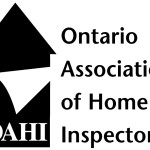
The furnace filters primary purpose is to protect the furnace and fan from foreign objects. With increased air quality awareness, some filters are now being marketed to reduce exposure to particles which can affect your health. But do these filters actually improve air quality in the home?
Filter research
Canada Mortgage and Housing Corporation (CMHC) conducted a study to verify filter manufacturer claims and to determine whether good filters can significantly reduce your exposure to airborne particles.
The CMHC study first tested ten filter types in a single home and then the following filters in 5 additional homes:
- 1″ premium media pleated filter
- Charged media electrostatic filter
- 4″ pleated media filter
- High efficiency bypass filters, such as a HEPA
- Electronic plate and wire (ESP) filter
Air quality in the ducts was tested when these higher efficiency filters were in use. The results were compared to when no filter was used. According to the test results, the ESP filter proved to be the most effective, with 1″ pleated and HEPA bypass filters running a close second.
Despite being the most effective filter in the tests, the ESP produces small amounts of ozone during operation. Since exposure to elevated ozone can irritate your lungs, separate testing was done to verify whether the amount of ozone produced by the ESP could affect the occupants of the home. In the research project, a survey of fifteen homes with ESP filters showed that all ESPs created ozone in the air stream of the duct, though none of these increased ozone levels in the house air above the safe concentrations recommended by health guidelines.
Research Conclusions:
This research showed that the particles in the duct air can be reduced when an upgraded filter is installed. However, the results also showed that central filtration does not result in corresponding reduction in particulate levels in the inhabited areas of the home.
The CMHC’s advice is to reduce dust entry by:
- removing footwear on entry
- keeping major dust generators (smoking, pets, etc.) out of the house
- reducing dust collecting surfaces (open shelves, carpets, upholstered furniture, etc.)
- diligent and frequent vacuuming with an efficient vacuum cleaner
- reducing the entry of particle-laden outdoor air by closing windows, improving house air-tightness, installing an intake filter on the air supply or using an indoor air filter
Filter Options
Fiberglass Filters are the least expensive and also the least effective. They are designed to catch only the largest dirt and dust particles to protect the furnace fan.
Pleated filters are available in various filtration levels and provide a good balance between cost and filtration efficiency. They will catch large allergens like mold and pollen but in higher efficiencies can restrict airflow through your furnace.
Washable Electrostatic filters contain self-charging cotton or paper fibers that attract small particles and are typically mid-efficiency.
Electronic Air filters use electrodes to create an ionized electrical field that “magnetizes” pollutant particles and collects them on the filter material. They are very high efficient and also high cost.
Which filter should I choose?
Your furnace filter choice has some tradeoffs. A high efficiency filter will remove more pollutants, but will also restrict airflow through the furnace making it work harder and possibly shortening its lifespan. Since the CMHC has demonstrated that the furnace filter has very little effect on air quality in the home, it’s best to choose a filter that best protects the furnace. In my opinion, a low efficiency pleated filter strikes the right balance between cost and filtration.
Never switch from a fiberglass filter to a high-efficiency filter without first talking to your HVAC technician. The technician can boost fan speed to compensate for the reduced airflow. Even then, you still have to be diligent about replacing the filter approximately every three months. A clogged filter can burn out the blower motor, damage the heat exchanger and cost you hundreds of dollars in wasted energy.


